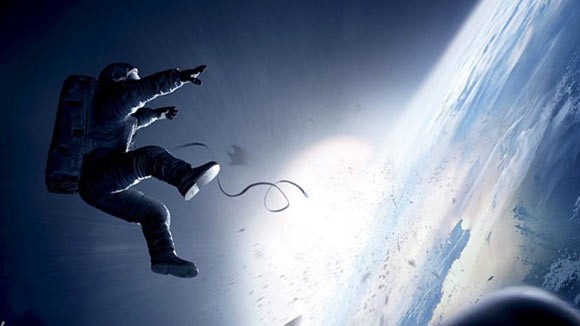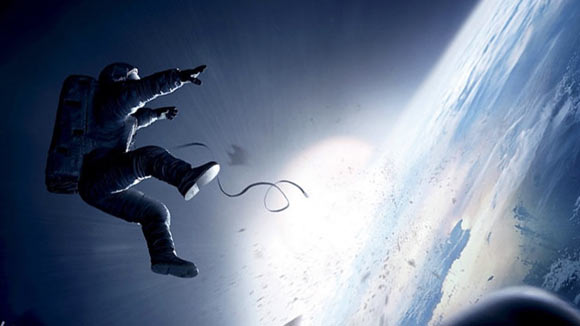

Is Alfonso Cuarón’s “Gravity” An Animated Film?

Animation plays such a seamless role in live-action production nowadays that some films which are identified as live-action are mostly animated. This may seem like a trivial distinction, but when such films are presented to the public as live-action, it devalues the role of animation artists in the process. Quite simply, these films would not exist without animators.
A perfect example of this new technology-driven, animation-heavy hybrid film is Alfonso Cuarón’s highly anticipated space movie Gravity, which opens this Friday. The film used previsualization to a larger extent than almost any other live-action film to date, and was animated once in its entirety before actors even entered the production. The Wall Street Journal’s Don Steinberg explained the process:
First, a complete version of the movie was made inside a computer. The animation process called previsualization is a way that many filmmakers plan scenes, as a step beyond illustrated storyboards. But it’s unusual for an entire film to be “prevised.” Here, they essentially created a Pixar-style animation of the movie containing everything but the actors. The simulated spacecraft and tools other objects needed to look ultra-real rather than cartoony. Rather than just serving as a reference and planning tool, detailed imagery created in the previsualization became the movie…In some scenes in the film, the only thing on the screen that’s a “real” camera shot rather than something computer-generated is Sandra Bullock’s face. The spacesuits often are computer imagery. A couple of physical ship-console sets were built, but actors also interacted with white cardboard panels just to give them something to touch. Even a third astronaut who appears briefly is computer generated, with an actor providing only his voice.
Cuarón should be commended for his ready acknowledgement of animators in the filmmaking process. It’s a marked difference from just a few years ago when Avatar director James Cameron tried to diminish the role of animators in his production through obfuscation and misleading statements. Cuarón, on the other hand, openly discussed his film’s heavy use of animation in a Wired interview:
“We had to do the whole film as an animation first. We edited that animation, even with sound, just to make sure the timing worked with the sound effects and music. And once we were happy with it, we had to do the lighting in the animation as well. Then all that animation translated to actual camera moves and positions for the lighting and actors…We animated for two, maybe two and a half years before we started shooting the actors. Then we shot the film—and then the poor animators had to start from scratch because they had to base their final animations on what was shot. Someone suggested we just call Gravity animation, but I don’t think we can because there’s a fair amount of live action. And it was really hard work for the animators. After all, you learn how to draw based on two main elements: horizons and weight.”
As film production evolves, so too must our terminologies. If the heightened importance of animators in contemporary filmmaking is accurately represented, there is a net benefit to the community. The term ‘hybrid film’ has sometimes been used, which is a good start. However, that term does not effectively describe a film like Gravity which is an ostensibly live-action film that was conceived and produced from an entirely animated framework.
